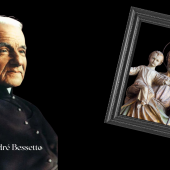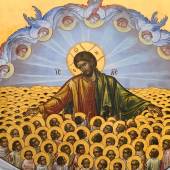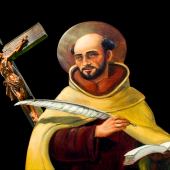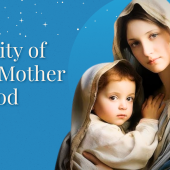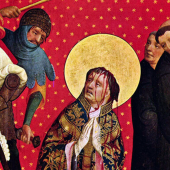Saint Isidore the Laborer
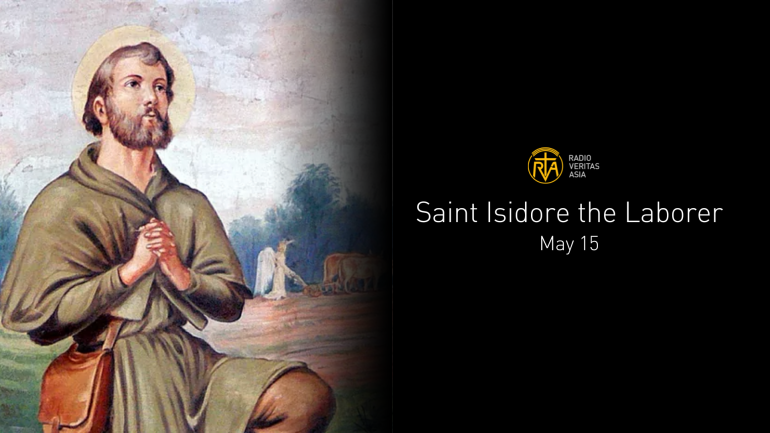
Isidore is also known as Isidore the Farmer. Born in 1070, he was a well-known Spanish agricultural laborer who passed away on May 15, 1130. He is renowned for his love of animals and the underprivileged.
He is the Catholic Church's patron saint for farmers. May 15 is his feast day.
Labrador is the Spanish word for expert. His original name was Isidro de Merlo y Quintana.
Born in Madrid in 1070 or 1082, his impoverished yet pious parents called him Isidore after his patron saint, St. Isidore of Seville.
Isidore spent his whole life working as a hired hand on a farm outside of the city for affluent Madrilenian landowner Juan de Vargas. He distributed whatever he had to the less fortunate, including his meals. Afterward, Juan de Vargas named him bailiff of his entire estate in Lower Caramanca.
Maria Torribia is known in Spanish as Santa María de la Cabeza, and she is Isidore's wife. Maria and Isidore only had one son. A child once miraculously survived after falling into a deep well just as the water was rising to the surface and bringing the boy down with it, all thanks to his parent's prayers. Their son eventually passed away.
Despite not having his death officially recorded until 1172, Isidore passed away on May 15, 1130, in his birthplace near Madrid.
Below is a list of some of St. Isidore's most well-known miracles attributed to him.
Isidore went to Mass early in the morning at one of the Madrid churches before heading off to work. One day, his fellow agricultural laborers brought up Isidore's habit of arriving late for work in the morning to their manager. Upon investigation, the master discovered that an angel was serving Isidore during his prayer.
On another occasion, Isidore's boss thought he was working with three other field laborers because he saw an angel plow on either side of him. In other stories, Isidore revived his master's dead daughter by springing a freshwater spring from the parched earth, thus quenching his thirst.
He saw some wood pigeons scuttling across the frozen ground in search of food one winter day while he was on his way to the mill to grind wheat. He felt sad for the poor creatures and laughed at the spectators, so he laid half of his expensive wheat sack on the ground for the birds. When he got to the mill, though, the ground wheat produced twice as much flour as expected, and the sack was full.
Isidore would frequently bring anyone who was hungry home, and Maria always had a pot of stew on the hearth in their modest home. One day, he brought home more hungry people than usual. Maria informed him that there was just no more stew in the pot after serving a sizable throng. He advised her to give the pot another look, and she succeeded in getting enough stew out to feed them all.
On April 2, 1212, heavy rains forced the exhumation of cadavers, leading to the discovery of his remains in Madrid cemeteries.
He reportedly made an appearance before Alfonso VIII of Castile in 1212 and gave him advice on how to ambush the Moors to defeat them in the battle of Las Navas de Tolosa. King Philip III of Spain was able to overcome a fatal sickness and start the beatification process by touching the saint's relics. The new reliquary was a pricey silver one. Several members of the royal family have also prayed to the saint for healing abilities.
Some say he worked 438 miracles. The only source of hagiography on him, the 14th-century codex Códice de Juan Diácono, lists five of his miracles: The text describes his wife's dinner pot, the birds and the grain, Tillage as the angel, his prayer to protect his donkey from a wolf assault, and a similar story about his involvement in the fraternity.
The codex's discovery, made forty years after his passing, proves his body's incorruptibility.
Pope Paul V beatified Isidore in Rome on May 2, 1619, and canonized him in 1725.
People revere Saint Isidore as the patron saint of bricklayers, farmers, peasants, and day laborers in general.
Icons typically depict Saint Isidore as a peasant holding a sickle and a sheaf of corn. One may see a herd of white cattle, or Saint Isidore holding a sickle and staff, accompanied by an angelic plow. His emblem is a plow or a spade in Spanish art.
The example of St. Isidore's life serves as a reminder of the value of tenacity and the path from the mundane to the holy.
It's evident from St. Isidore's life that "if you have your earthly commitments in order, your spiritual self will also fall into order."
Radio Veritas Asia (RVA), a media platform of the Catholic Church, aims to share Christ. RVA started in 1969 as a continental Catholic radio station to serve Asian countries in their respective local language, thus earning the tag “the Voice of Asian Christianity.” Responding to the emerging context, RVA embraced media platforms to connect with the global Asian audience via its 21 language websites and various social media platforms.









